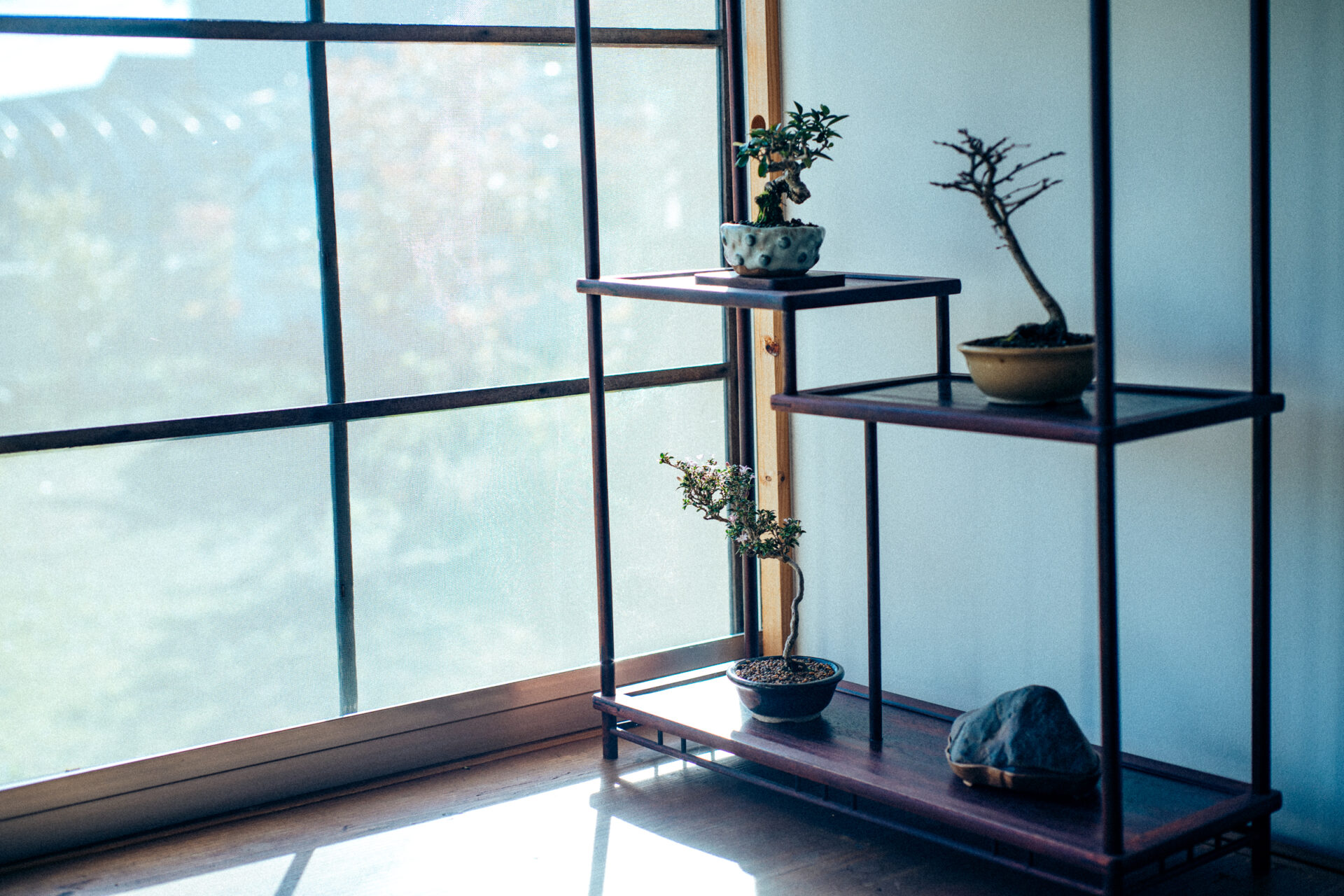Bonsai has a reputation for being high society, formal and difficult to get into.
At least this has always been my impression of the bonsai world.
However, thanks to meeting a botanical researcher, my preconceived notion was drastically overturned and I have become very attracted to the world of bonsai.
Shiozu Takehiro of Shiozu Shokubutsu Kenkyujo (Shiozu Plant Research Center) explains the fundamental attractions of bonsai in a way that is approachable and easy to understand.
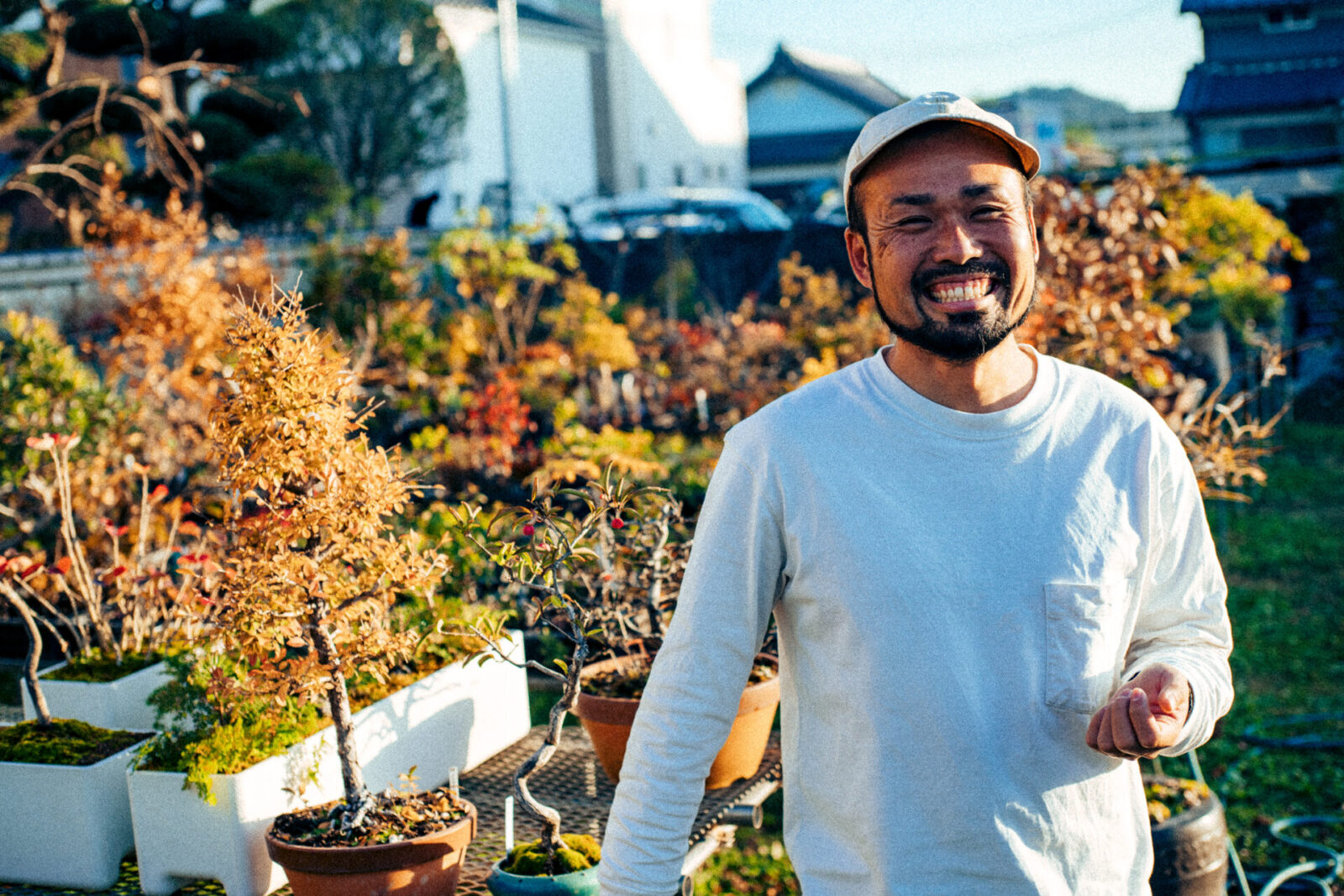
He is based in Kashihara City of Nara Prefecture and he tells us, “There is actually a lot of room for free expression in bonsai, and you can do as you like.”

On his official website, he states, “We hope to be a sanctuary that is open to all plants and people, and we research how to incorporate plants into our everyday lives.”
How does one live with a plant that exists on a different timeline as us humans–sometimes living hundreds of years? Shiozu tells us all about what makes bonsai so appealing, as well as hints on how to get to know your plant better and live a more fruitful life.
Life is short, but bonsais are a different story
Upon entering the research center, unique bonsai of various sizes caught our eye.
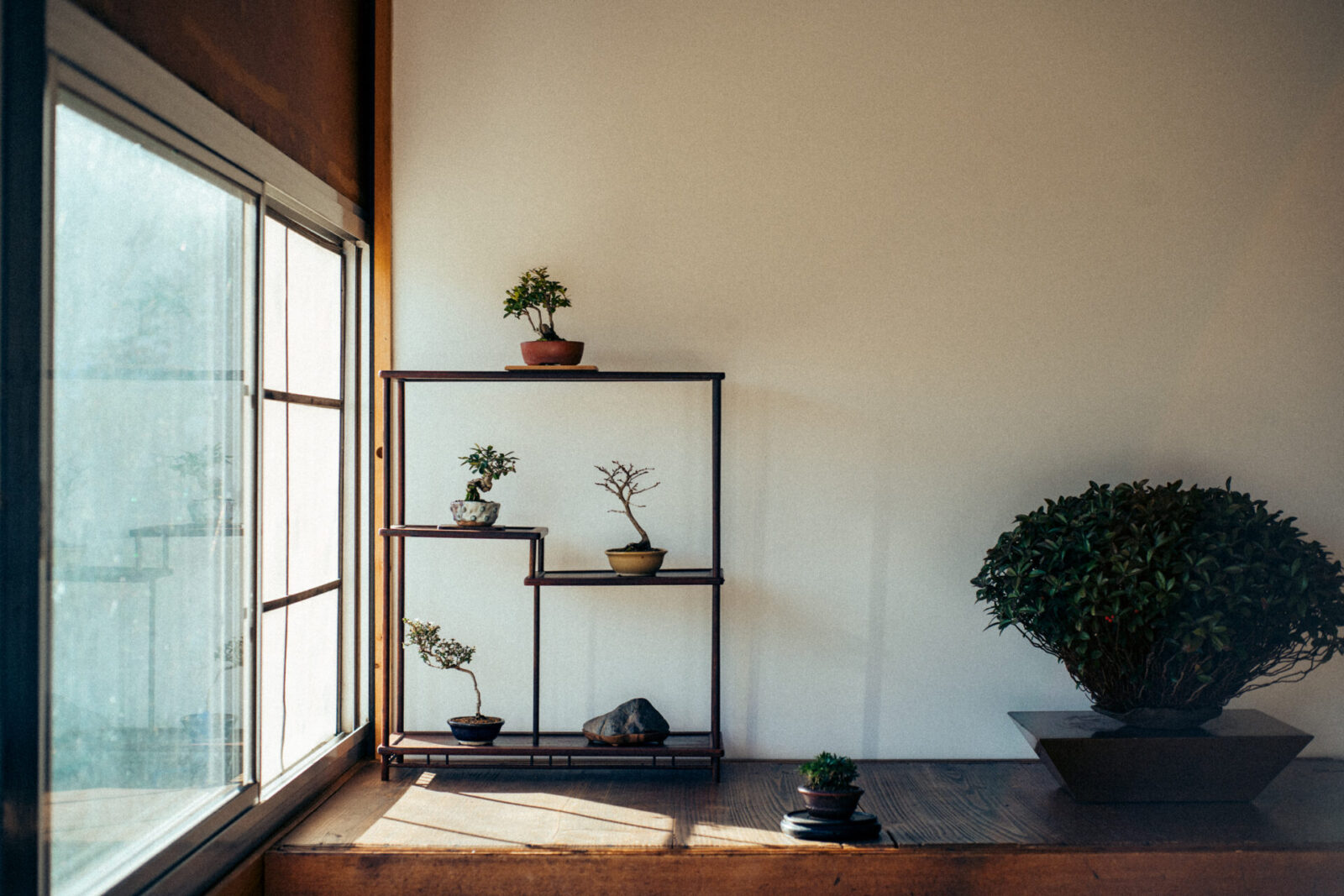
Our visit was in late November, just as the autumn leaves were changing colors. Among the bonsai in the small pots, there were a few that were showing off their fall colors. Their beauty made me exclaim in delight.
Shiozu shares, “I not only love plants, but I have also been strongly drawn to Japanese culture and history so I wanted to work in a uniquely Japanese field. I was attracted to bonsai because of its beautiful form and the creativity surrounding it.”
Shiozu once studied painting, design and architecture, but none of them seemed right for him when he was exploring his career path. He reflects on his past and describes himself as being quite fickle.
That changed when he discovered bonsai, and after graduating from university, he began an apprenticeship with a Bonsai artist. After three years of rigorous training, he became independent and started working in Tokyo in 2010 when he opened the Shiozu Shokubutsu Kenkyujo (Shiozu Plant Research Center).
Now based in Kashihara City of Nara Prefecture, he continues to live and work with plants together with his wife and two apprentices.
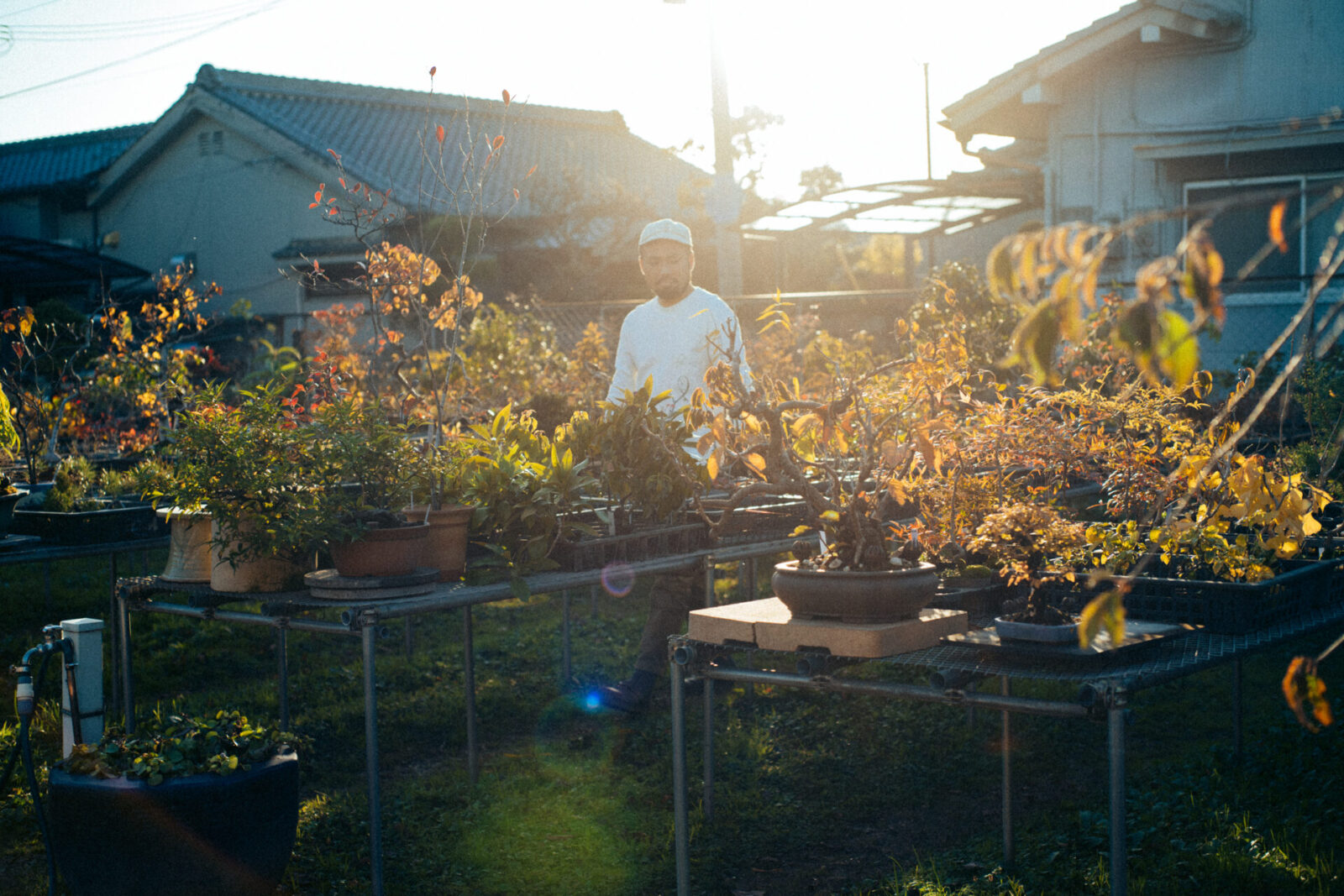
To start off, we asked the most basic question: what exactly is bonsai?
Shiozu answered, “Bonsai is thought to be a difficult discipline because people think it is expensive and has many formal rules. However, one of the charms of Bonsai is that there is no one ‘path’ or one correct way to do it. Japanese flower arrangement and the tea ceremony or judo and martial arts have different schools which are founded in order to teach the art to the masses, and they each have their own form or “way” and this is known as “do (“method” or “path”).” However, I am sure you have never heard of a ‘bonsai-do.’”
“In fact, there is a lot of room for freedom in bonsai. There are some basic rules that need to be followed, of course, but there is a lot of room for self-expression through enjoying the process of growing the plants, selecting the species, pots, shapes of the trees, etc.”
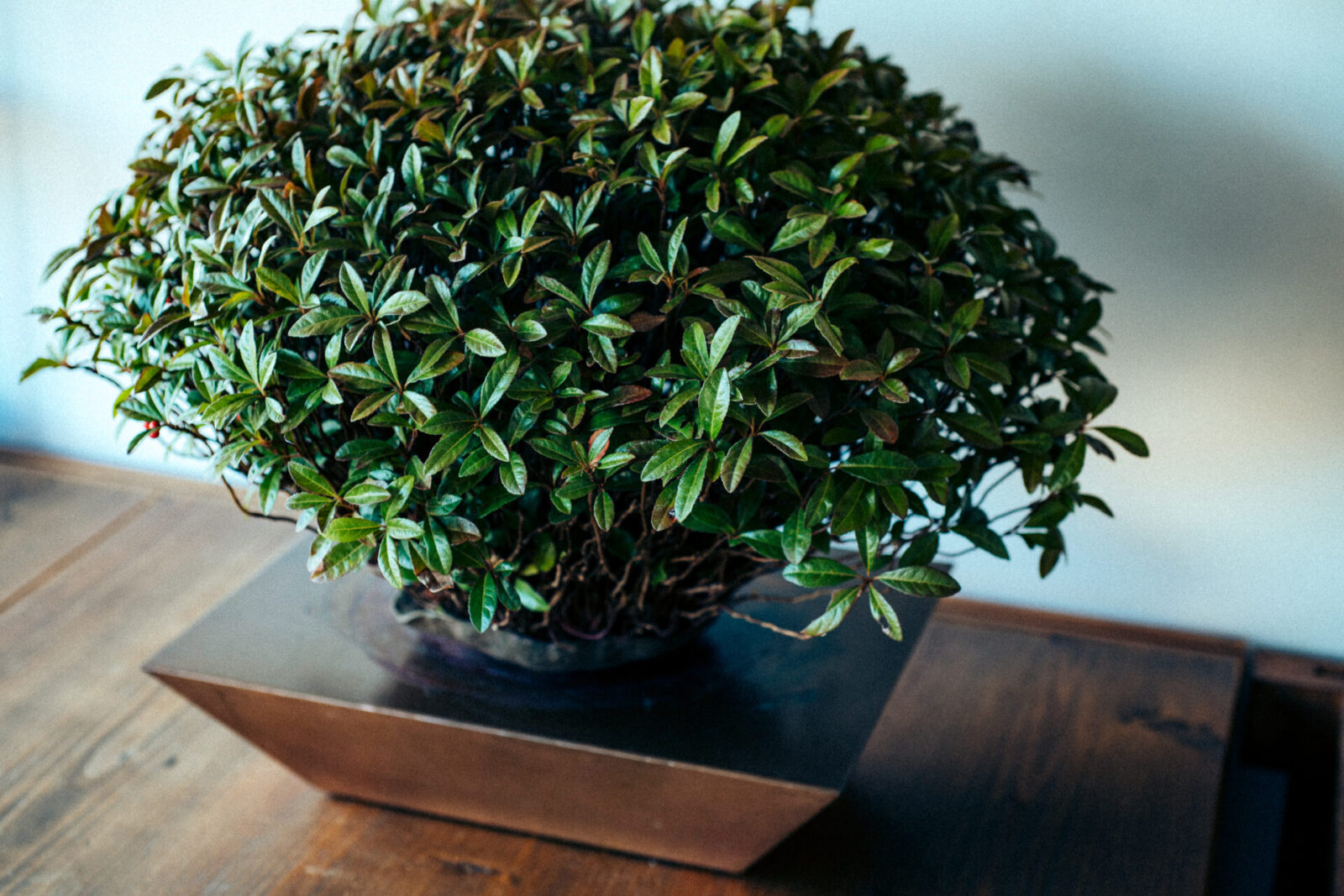
Shiozu’s research center’s main focus is on selling starting plants (tanegi). Customers can buy the starting plant on its own, or they can choose a pot to go with it and have it formed into a bonsai.
“The more high-end the bonsai, the more the shape of the tree is set in stone and it requires higher skills to maintain it. On the other hand, starting plants offer a wide range of possibilities because they can take on whatever new form from then on. Starting plants are enjoyable for all skill levels, including beginners. My wish is that people create their own bonsai using their own imagination.”
There are two factors that define bonsai.
One is whether the piece expresses scenery or not. Although it is based on using one’s imagination, the key is whether or not the plant in the pot creates and expresses its own scenery.
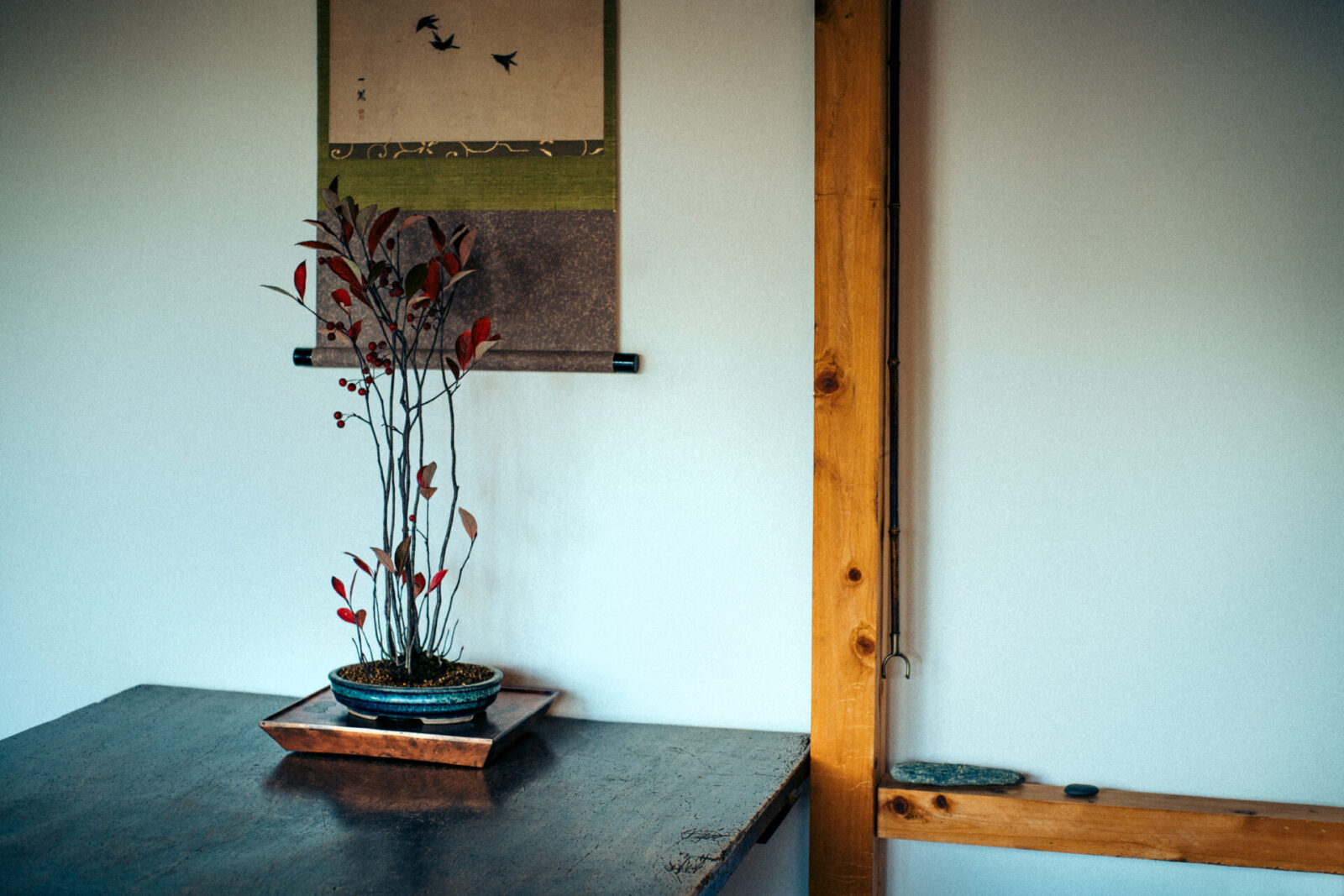
The other definition is whether it is sustainable for an indefinite amount of time. For example, annual plants such as sunflowers do not make Bonsai. Plastic or wooden pots are also not suitable because they deteriorate quickly, so ceramic pots are used. Although it depends on the species of the tree, a Bonsai can last for 100 or 200 years.
“One bonsai has a lifespan of hundreds of years. Bonsai that were grown by historical figures such as Yoshinobu Tokugawa are still thriving today. This is because someone has taken over the role of caring for the bonsai. Bonsai is something that you can keep for a lifetime or more.”
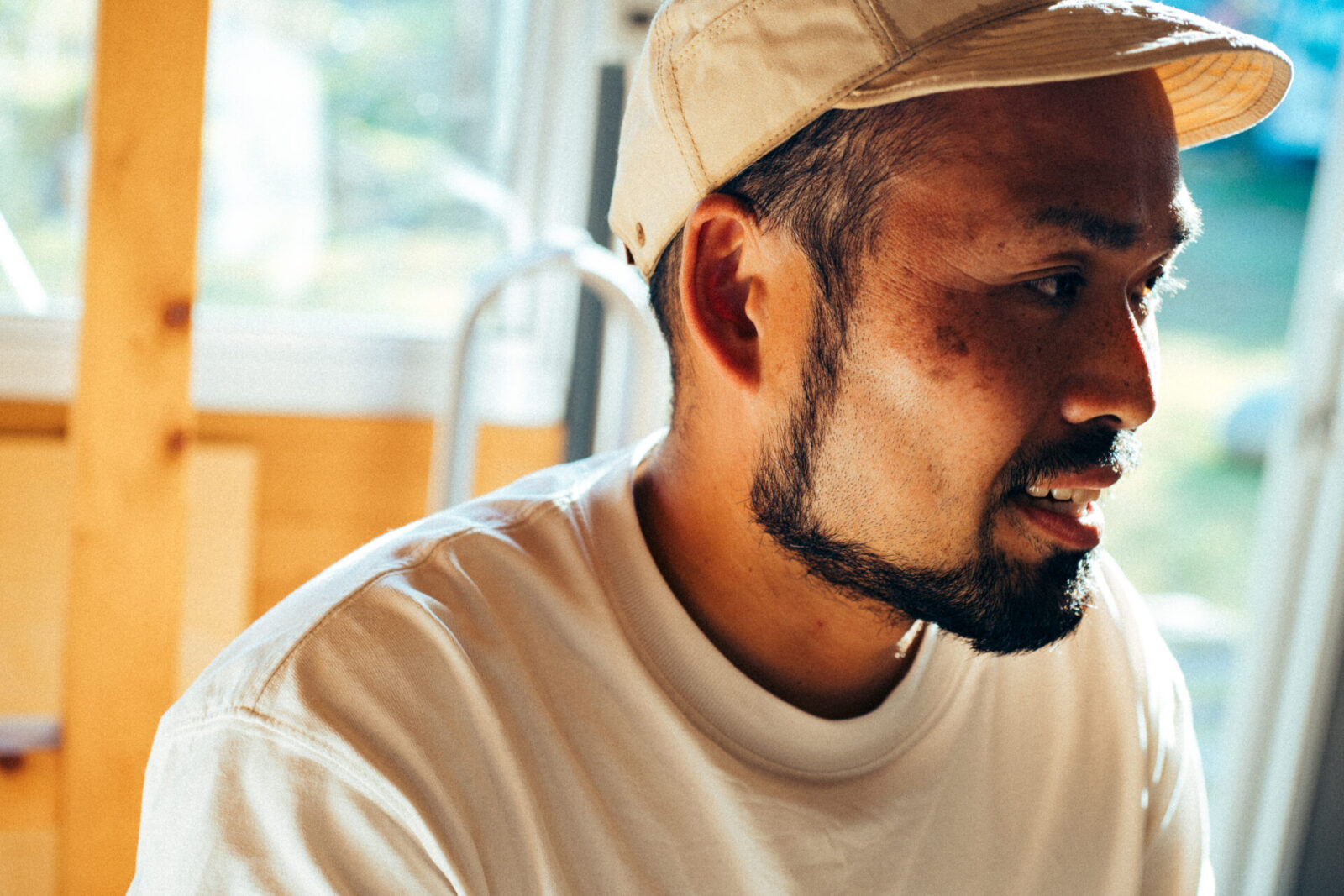
Although human life is short, bonsai live for hundreds of years. Like a journey of its own, bonsai is passed on from one person to the next and becomes a part of each person’s life as they are carefully cared for by their owner.
For this reason Shiozu’s research center also takes in bonsai that people can no longer take care of.
“Many people bring in bonsai that were carefully cared for by a deceased loved one. Sometimes we take the bonsai in, and other times we convince the family that the bonsai is very valuable so they should keep it themselves.”
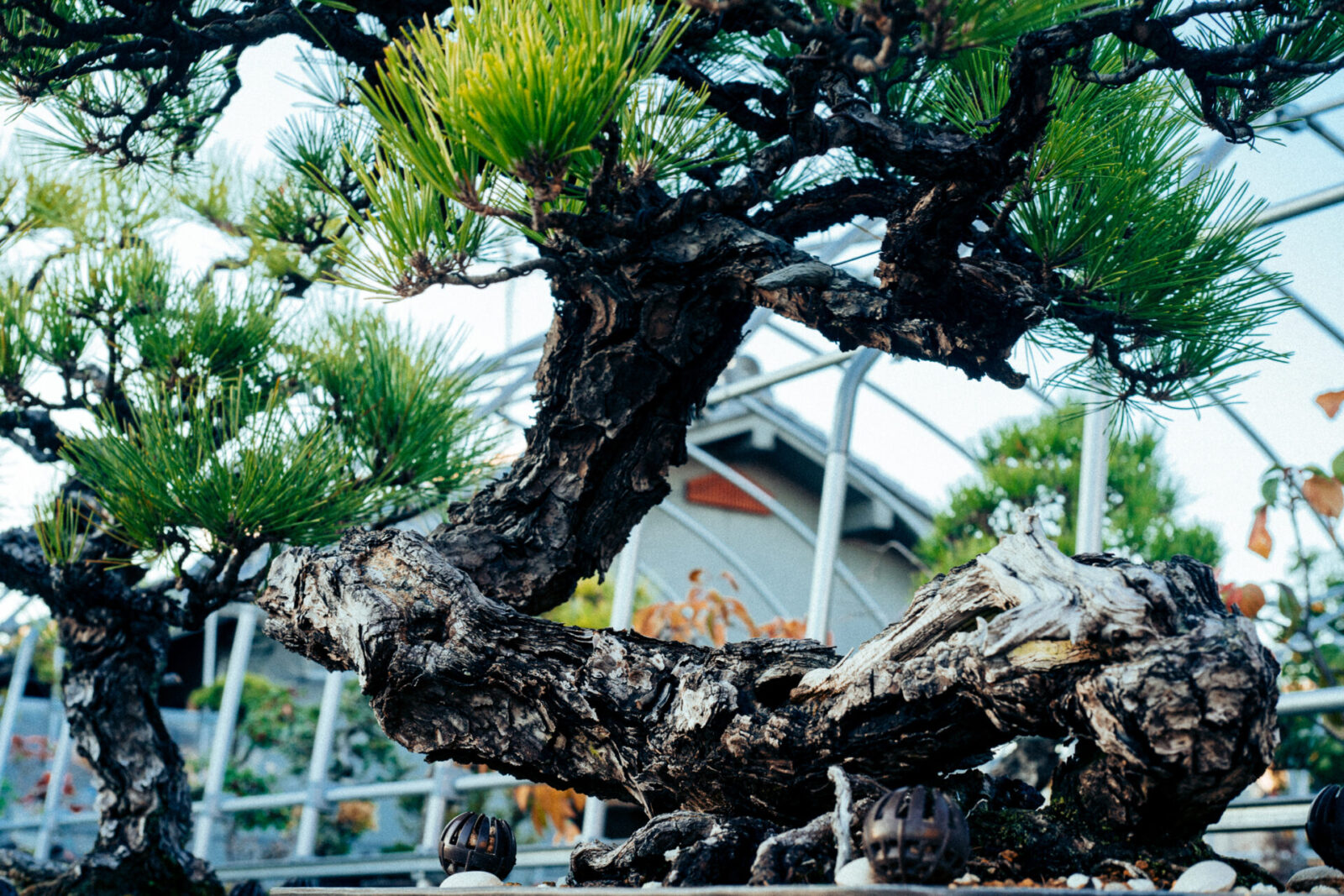
Experiencing time through bonsais
There is a lot that people can learn from Bonsai today, especially in our modern world where consumption and single-use waste have become the norm.
In fact, the people who buy bonsai tend to be people living in urban environments. Shiozu speculates “Perhaps it is because they have so few opportunities to experience and be in touch with nature, and many of them are weary.”
“For about ten years, I used to hold monthly bonsai workshops in Tokyo and people who led very busy lives often attended. One participant told me that they started getting up five minutes early every morning in order to water their bonsai, but since it only takes them a minute, it also gave them time to enjoy a cup of coffee.”
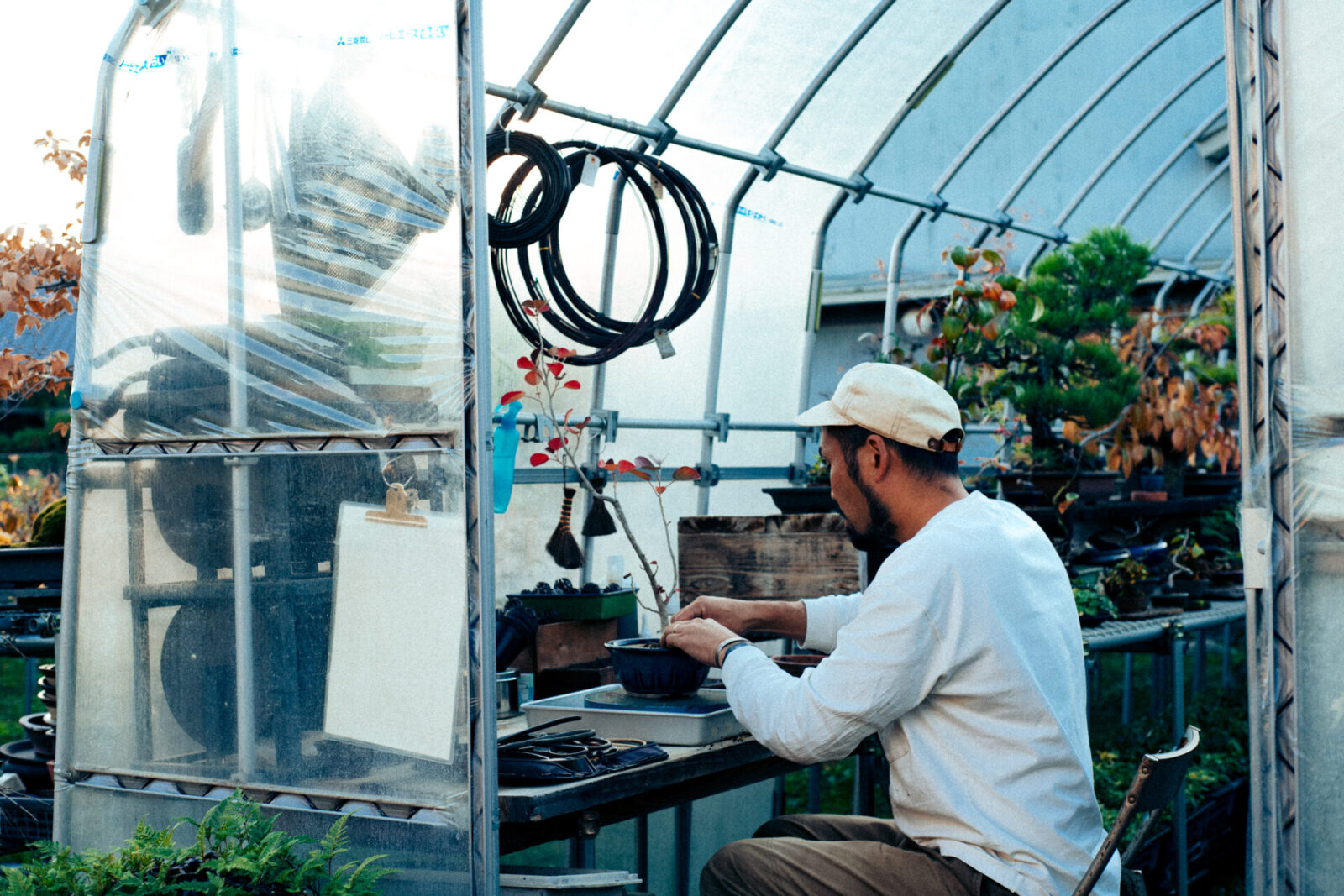
Taking time to experience being closer to plants is another attraction of bonsai.
“Humans are always in a hurry. Our lives are short so in some ways it can’t be helped, and I think it would be nice if we were given as much time in this world as bonsai. When people match their sense of time with that of bonsai, it slows things down a bit.”
Bonsai takes time and effort, but that is what creates our connection to them. Spending time with bonsai seems to give people who are living rushed lives a chance to slow down and think about their way of working and living.
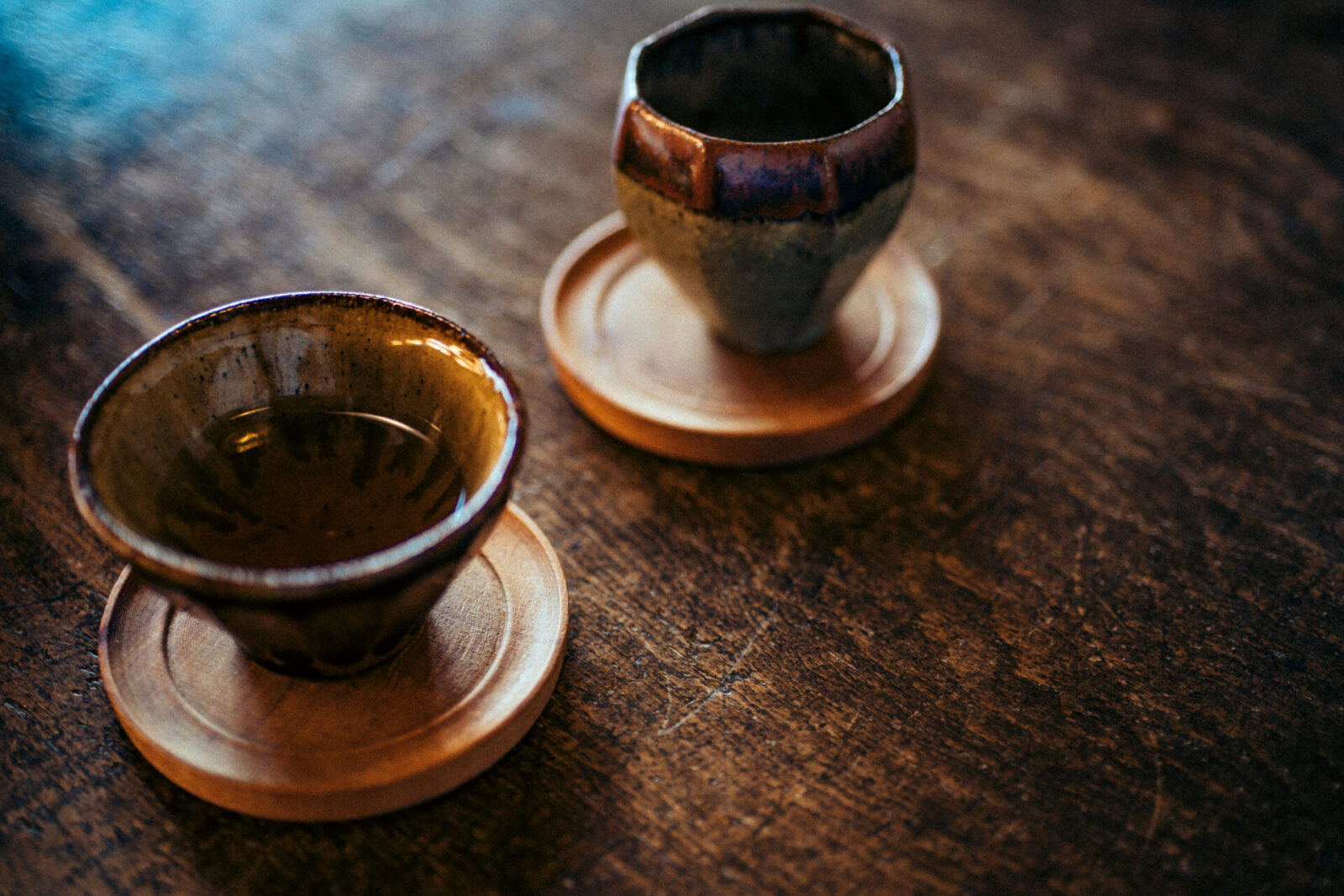
Enjoying the four seasons through Bonsai
Japanese plants are an important part of enjoying bonsai, so what is it about Japanese plants that make them attractive plants for bonsai?
“Japanese plants have four seasons. In Japan, there are four distinct seasons and the plants change with each season. The nice thing about bonsai is that it allows you to experience the seasons directly through them. Japanese culture has always valued experiencing the different seasons through one’s senses, so Bonsai allows you to incorporate that into your daily life.”
The four seasons that are expressed through bonsai plants, according to Shiozu, are “the budding in spring, the deep green in summer, the changing color of autumn leaves, and the bare branches in winter.”
Winter is a very unique season because the bare branches of the tree represent death, and it is considered beautiful and one learns to appreciate its beauty.

For example, the tree in the photo looks like a wilted and dead tree at first glance, but how should one appreciate its beauty?
“One appreciates the beauty of a bare tree by looking at the shape of the tree itself. How do the branches and curves of the tree look to you? It is a question of your personal imagination. From there, you can look at the color of the bark, the shape of the base of the tree and roots, and so on. You can also appreciate the ceramic pot and imagine what life was like in the time that it was made.”
“When I see someone display a bare bonsai tree at their front door in winter, I get the impression that they have a very rich spirit.”
“There is no spring without winter, so when you see the budding of the branches, you get a strong sense of the vitality of life. There are some evergreen trees such as pine trees in bonsai, but it is also elegant to appreciate the bare trees in winter.”
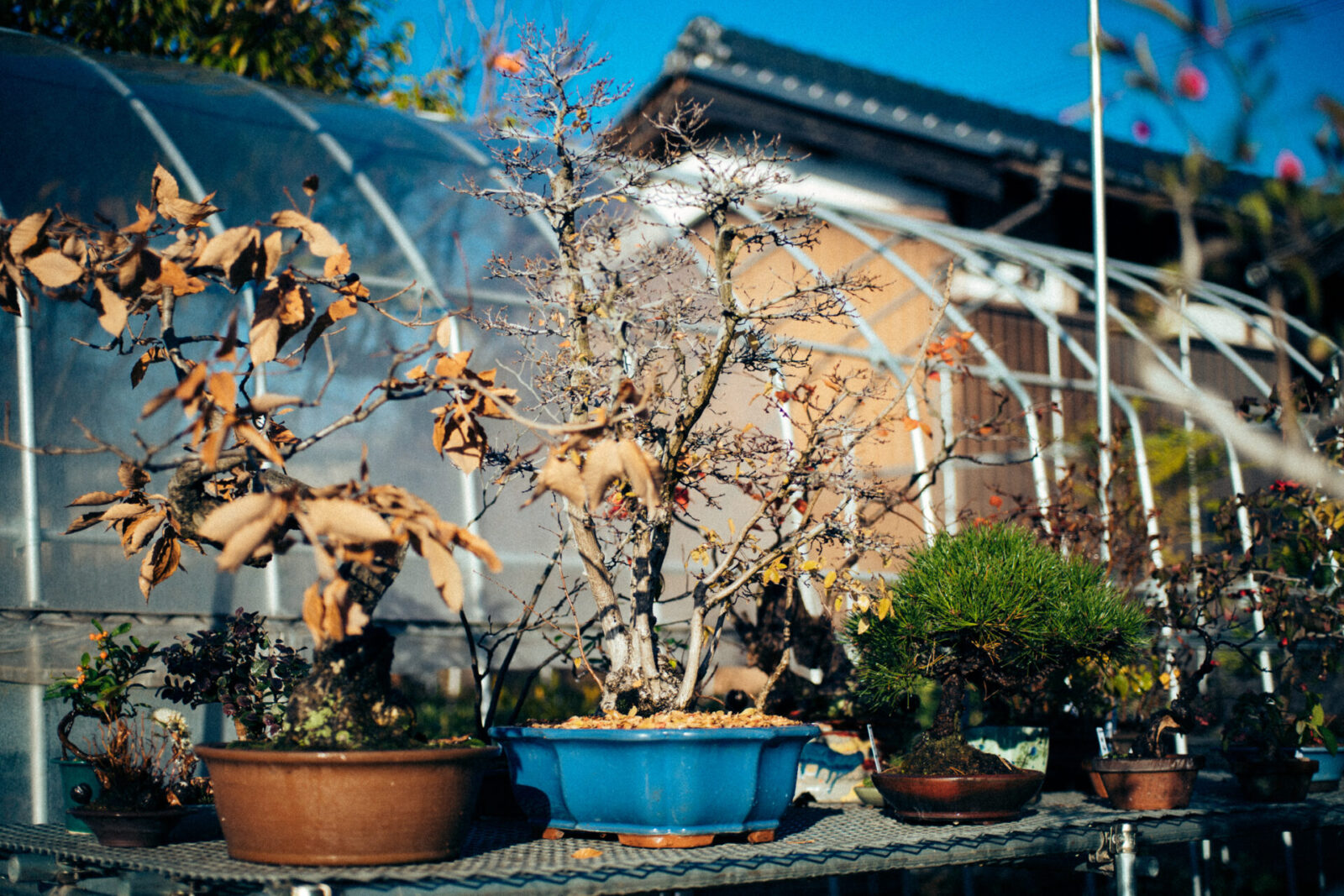
Naturally, bonsai in Japan uses Japanese plants so they are designed to survive the changing seasons.
As long as the pots and soil are properly prepared and maintained, they are very resistant to rain, snow, heat and cold. In that sense, another characteristic of bonsai is that they are very easy to grow and maintain.

In order to experience the four seasons, bonsai are most commonly placed outside in a garden or on the balcony and exposed to the outside air.
When it is time to enjoy looking at them, they are brought inside and displayed in the house.
Bonsai can be placed at the entrance or in the tokonoma (reception room) when welcoming guests, and they become a source of pleasant conversation. Bonsai is a tool for good hospitality and it can transform both the outside and inside of your home into a rich and attractive space.
Enjoying the seasons in a pot
Another aspect of bonsai that can be taken as a general rule is that it requires you to incorporate “time” in your life.
What does that mean exactly?
“For example, if you want to make a 15-year-old tree into a bonsai, you should find a ceramic pot that was made 15 years ago. A new pot does not match with the time frame of the plant, so it will not look right. This is not a personal rule that I have, but it is a rule that is practiced by all bonsai artists.”
“There is a concept in Japanese bonsai where when something gets old and dirty, we see it as having ‘time’ imprinted on it, and new things do not have much ‘time’ on them. I believe this is a very unique cultural perspective of Japanese bonsai.”
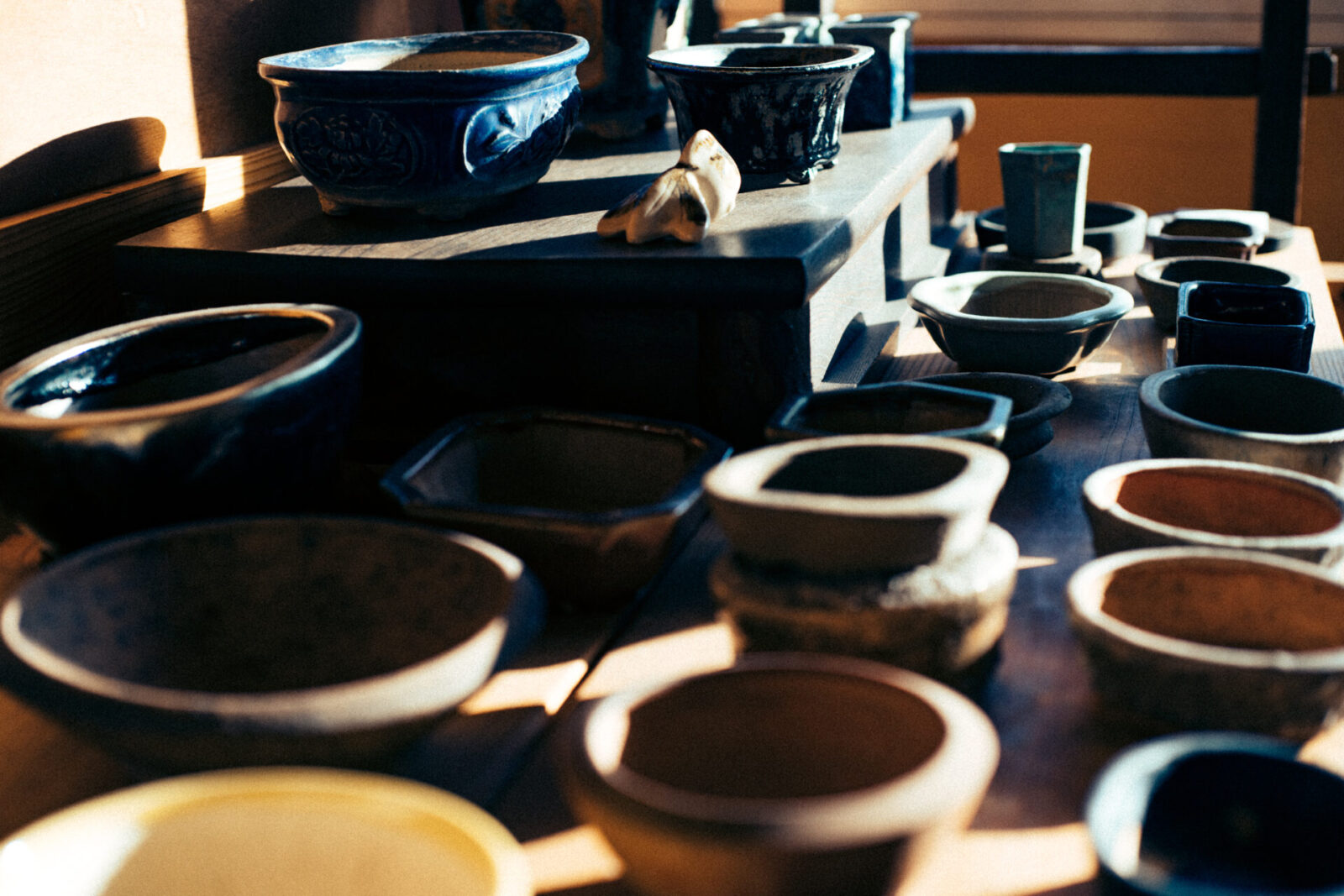
Rather than simply creating the shape of the plant or incorporating and adding new things, high quality bonsai requires one to put “time” into it.
In addition to looking into the past, bonsai also requires us to look into the future.
“Bonsai will remain even after your death. The nearest future we think about is three years from now. It takes three years for a seed to germinate and become a sapling of about ten centimeters, so one has to prepare and have a plan in place for when that time comes. Our actions are always based on the future of many years ahead.”
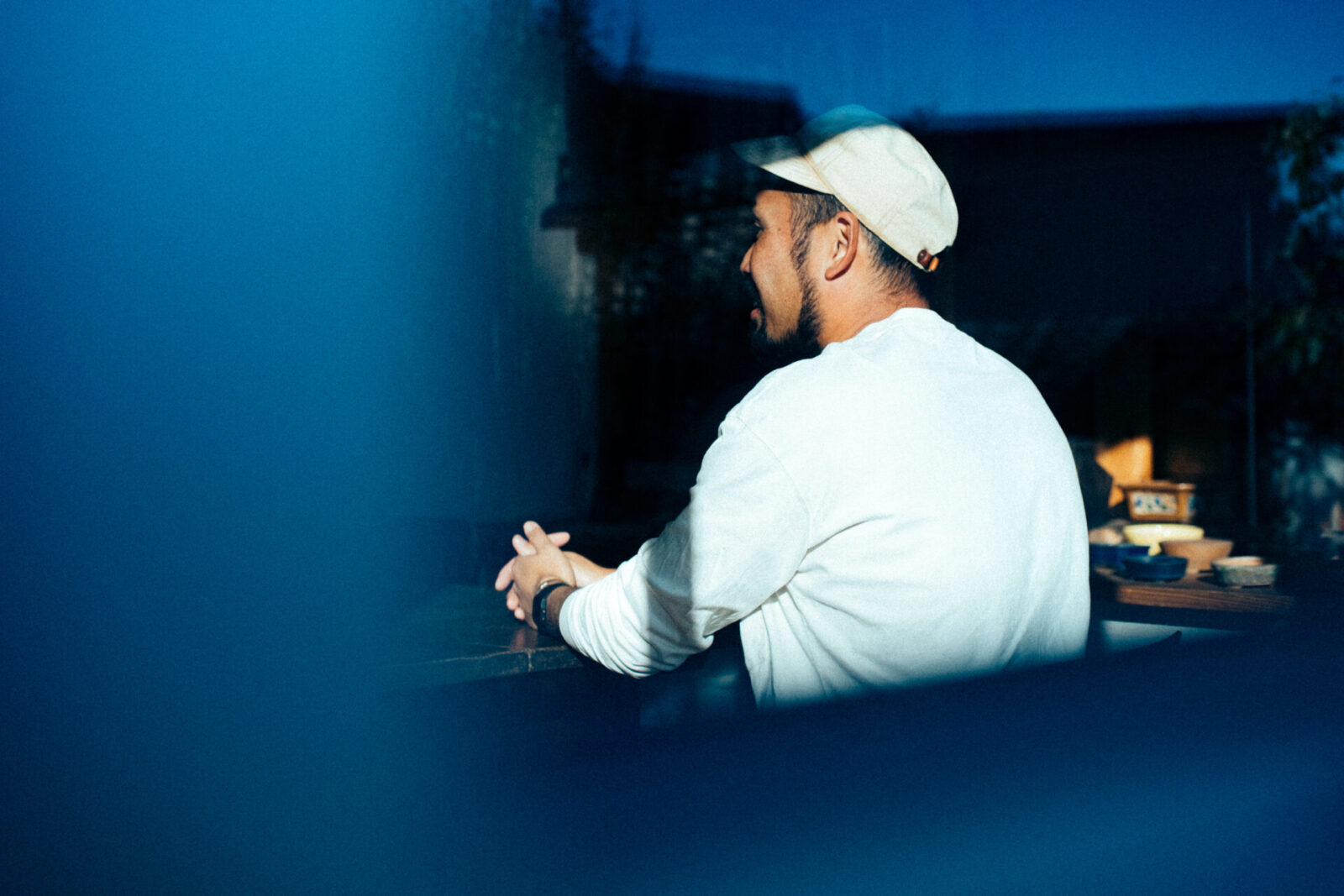
By incorporating the past and reading into the future, the world of bonsai exists on a time frame that exists far beyond our imagination.
“Bonsai artists talk to each other on a timeframe that is based on the future. We talk about how we are planting a keyaki (Japanese zelkova) which will be ready when our sons take on the family business, or how a plant will be ready to sell ten years from now.”
“Naturally we think about what will happen after we die, and what we can accomplish while we are still alive. Let’s say I have 40 years left in my life. There is only so much I can accomplish in the world of bonsai within this time. Of course there are still some things I can do, but there is so much more that I cannot do within my lifetime.”
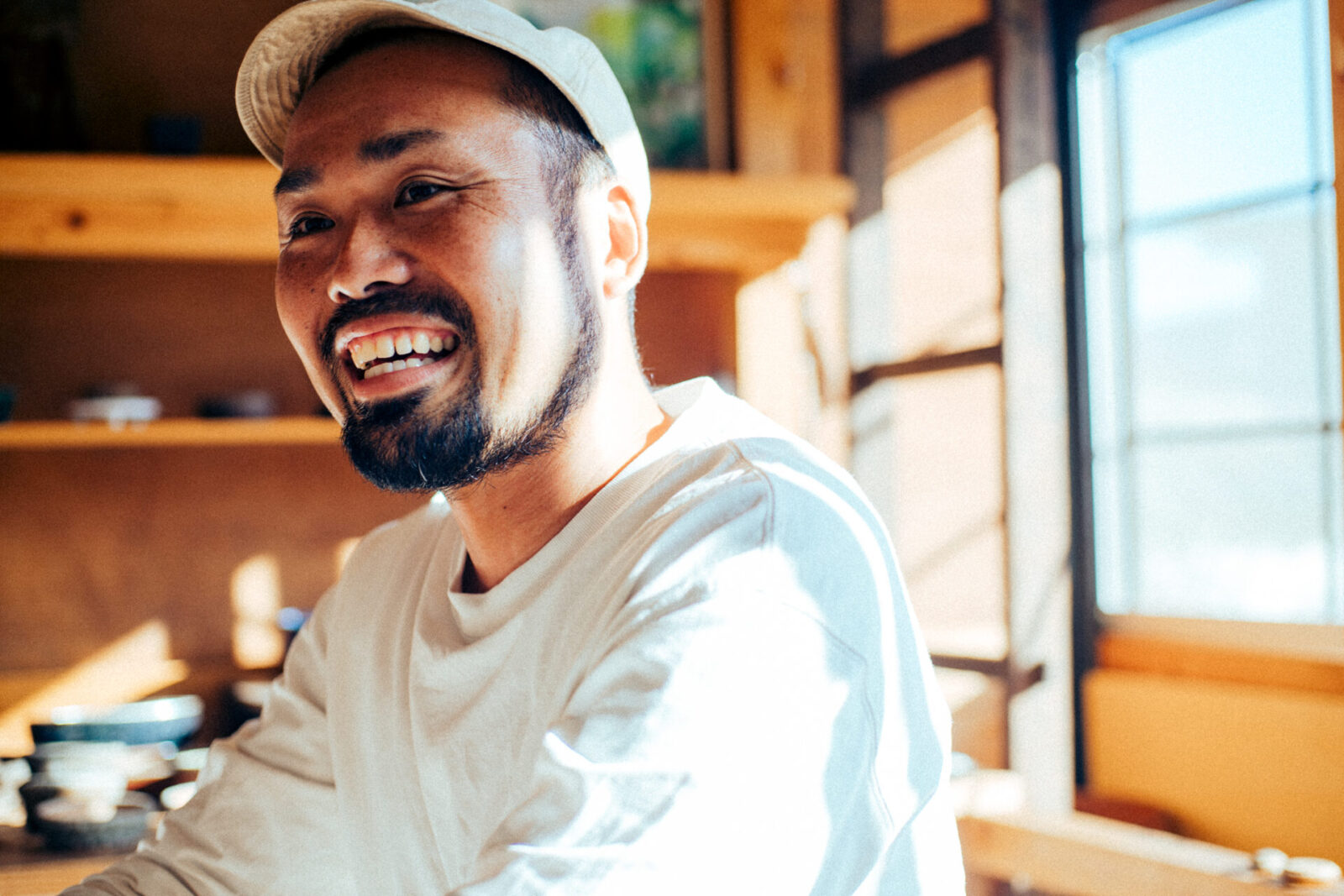
This unique perspective of time may help to lift some burdens we place on ourselves, as we focus less on the present and become fully aware of the fact that there is a limit to the things we can accomplish in our lifetime.
Giving water and love to our plants
Learning about the freedom in expression, experiencing the four seasons and gaining a new sense of time that comes with bonsai makes one want to give it a try.
We asked Shiozu which bonsai he recommends.
“I recommend growing a deciduous tree. It really allows you to experience the changes of the seasons and they are more hardy and easier to grow than evergreen trees.”
“I especially recommend maple trees. They have beautiful red autumn colors and are extremely strong and easy to care for, including pruning. Maple trees that are too small or too big are both more difficult to manage, so I recommend growing them in a pot that fits in both your palms.”

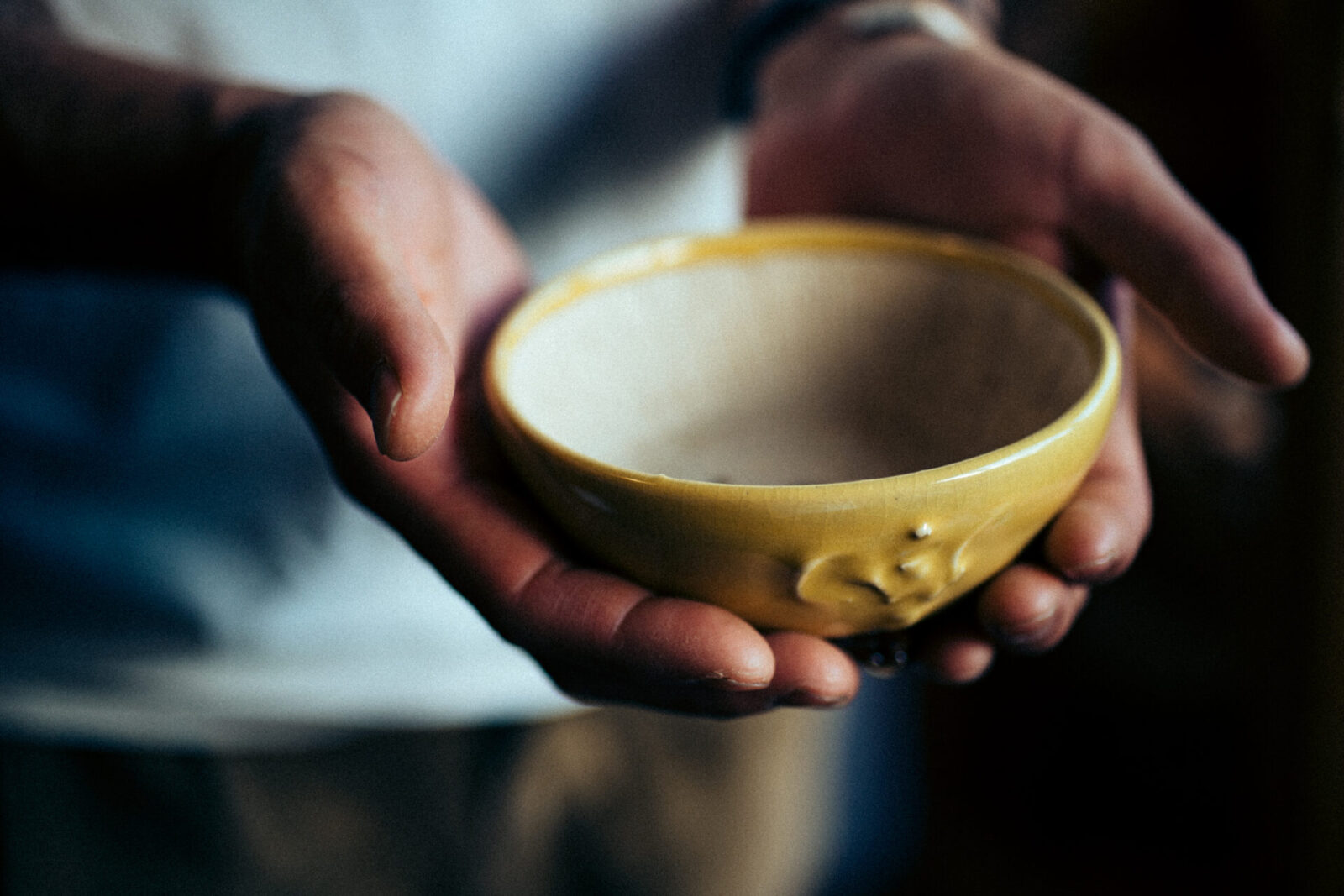
The basics of caring for your bonsai plant are in watering, soil and sunlight. The bonsai should be watered once a day (once every two to three days in winter) and they should be placed in a sunny location that has good ventilation for several hours a day. Every two to three years the bonsai should be replanted and given new soil.
Shiozu says he especially enjoys the time he spends watering his bonsai.
“When I am watering the bonsai, I feel my heart melting and feel the most relaxed. Besides mid-winter, I water the bonsai once a day and that is when I am most in touch with my bonsai. When I see how the leaves get wet and the plant is thriving, I feel that they are enjoying the water and I feel connected to them.”
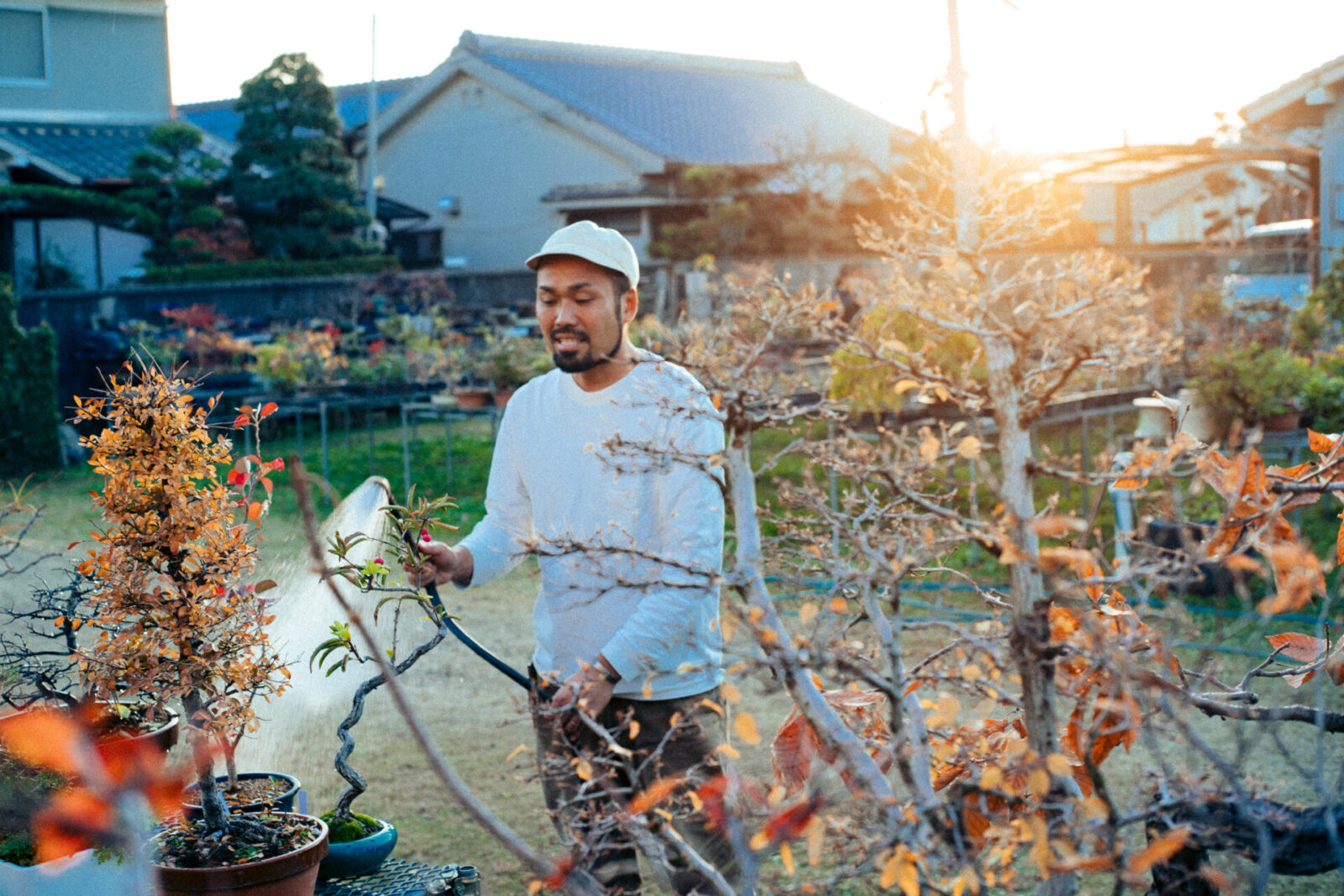
Shiozu has worked with bonsai for 10 years now and he speaks about bonsai with true joy and affection.
“Contrary to getting bored of it, I feel I don’t have enough time. I have finally found something that I can continue enjoying my whole life, so I do believe it is my ideal job.”
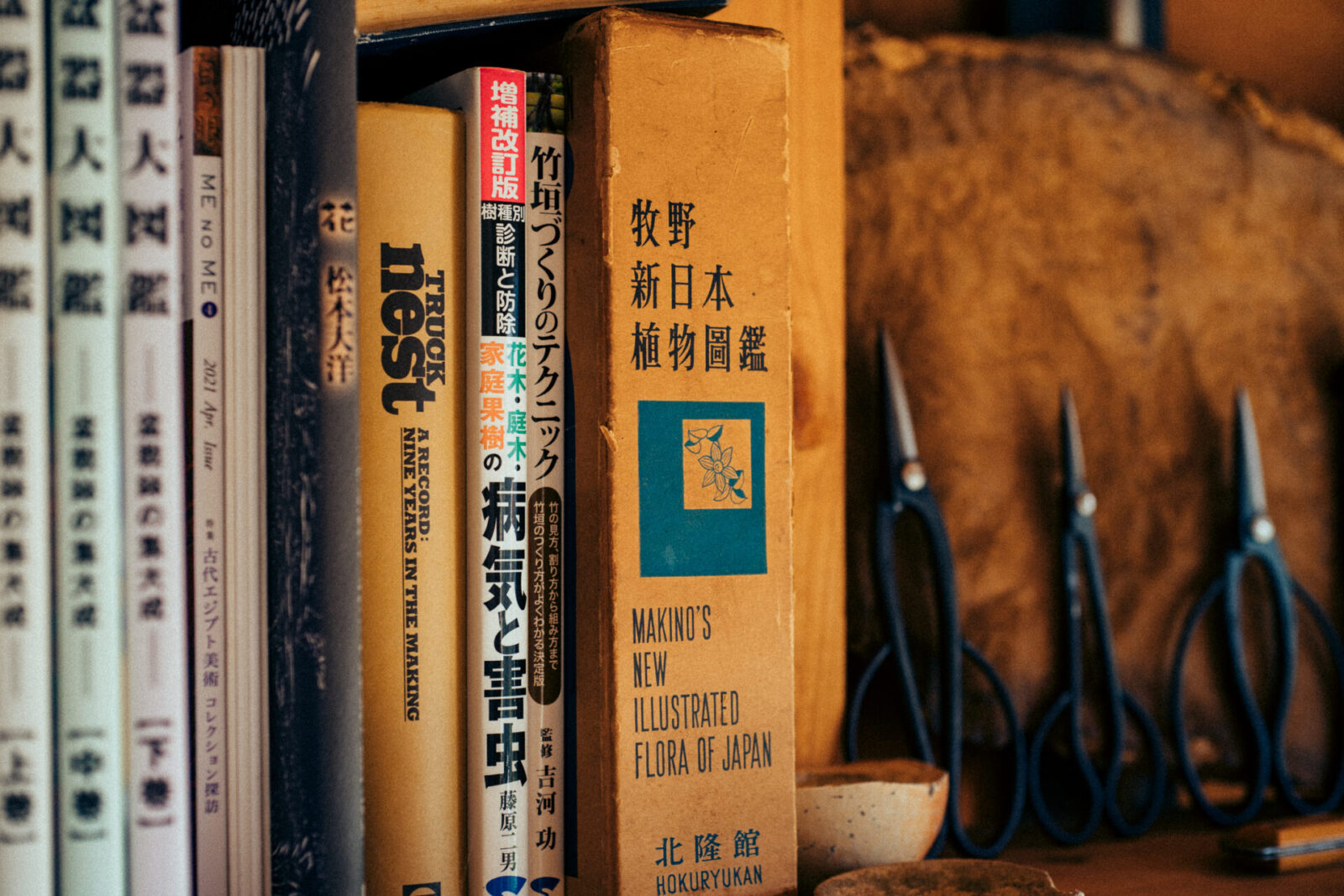
Shiozu talks about how he hopes people will be able to begin and approach bonsai more casually, as a part of their regular routine and as a hobby to simply enjoy. Learning about the freedom in the world of bonsai, we understood how time with bonsai can change how we spend the time we are given in this life.
Photo: Kaori Nishida
Translation: Sophia Swanson
Editor and writer. Freelance from 2003. Specializes in local and social issues, and the medical field. Reporting and writing for the magazine “Sotokoto” and web media “Through Me”. Editor for books including “Like a Rolling Komuin (Civil Servant)” by Hiroaki Fukuno and “Community Nurse” by Akiko Yada (both published by Kirakusha). Moved from Tokyo to Nara in 2017. Holds an yearly course on the “basics of editing” for the general public in Nara Prefecture.
Editor. Born and raised in Kagoshima, the birthplace of Japanese tea. Worked for Impress, Inc. and Huffington Post Japan and has been involved in the launch and management of media after becoming independent. Does editing, writing, and content planning/production.
